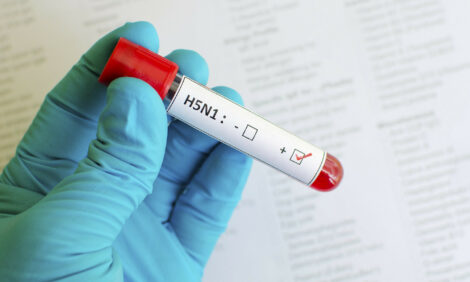



Turkey Muscle Growth: Ohio State Scientist Recognised for Discoveries
US - Ohio State University’s Sandra Velleman helps turkeys and the industry around them get stronger.A scientist in the College of Food, Agricultural, and Environmental Sciences (CFAES), Dr Velleman studies the genetic and cellular mechanisms governing how turkey muscles grow and develop -- key to improving the birds’ growth rate, keeping them lean and raising them efficiently for food. Then she helps the poultry industry develop management practices that put those findings to use.
The Ohio Agricultural Research and Development Center (OARDC), the college’s research arm, recently honored Dr Velleman for her contributions by presenting her with its 2014 Distinguished Senior Faculty Research Award. The award honors outstanding achievements by an OARDC faculty member at the rank of professor.
Dr Velleman, who last year earned Expertscape’s No. 1 world ranking for turkey research based on her published expertise, is a professor in the college’s Department of Animal Sciences.
“She was the first scientist to report that selection for increased growth rate in turkeys was associated with less desirable breast muscle morphology,” a nominator wrote. “Her discovery of maternal inheritance of breast muscle morphology in turkeys and resulting patent led to major changes in the turkey breeding industry and has resulted in many collaborations with both turkey and chicken commercial breeders.”
Much of Dr Velleman’s work focuses on how the extracellular matrix, or ECM, which surrounds the cells of tissues, regulates muscle growth and development.
“Her research is pioneering in demonstrating that muscle has an ECM and that the muscle ECM is not a mere inert structural scaffold -- it plays a functional role in regulating muscle development, growth and regeneration,” the same nominator wrote.
Her findings have led to the development, for example, of turkey production practices that maximize muscle growth and reduce fat conversion, the result being to maintain the low-fat turkey breast meat consumers prefer.
Ohio ranks ninth nationally in turkey production, according to the Ohio Poultry Association. The value of that production was more than $158 million in 2012. The industry creates 2,258 jobs annually and $68 million in earnings, the association reports.
Dr Velleman’s findings also “extend beyond agricultural production issues to mechanisms involved with the loss of muscle mass with aging in humans,” the nominator wrote.
Dr Velleman has received more than $4.4 million in grants from the poultry industry, the National Institutes of Health and the U.S. Department of Agriculture. She has published 127 peer-reviewed papers in 32 scientific journals.
She holds a Ph.D. with a specialization in cell and developmental biology from the University of Connecticut, a B.A. from Boston University, and was an NIH postdoctoral fellow at the University of Pennsylvania School of Medicine’s Connective Tissue Research Institute.
She previously received the Ohio Poultry Association’s 2009 Meritorious Service Award, the Poultry Science Association’s 2008 Embrex Fundamental Science Award and 1998 Research Award, and the National Turkey Federation’s 2006 Research Award.
The OARDC award includes a plaque, $1,000 honorarium and $3,000 added to the operating expense account of her OARDC research program.
OARDC Director Steve Slack presented the award at the center’s annual research conference April 24 in Wooster.
The conference, which included speakers from CFAES, Purdue University, and Ohio State’s colleges of Public Health and Arts and Sciences, focused on the theme “From Biology to Business -- The Transformational Power of Big Data.”









